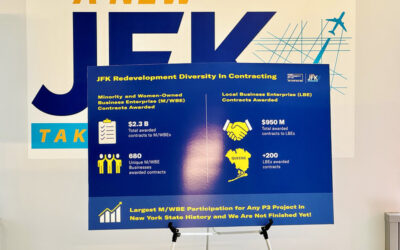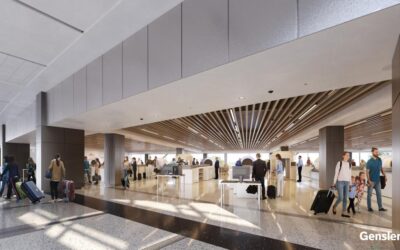
Airports in the United States are falling farther and farther behind their global counterparts because of a broad-based reluctance to invest in crucial infrastructure, Greg Principato, president of Airports Council International-North America, told a global audience last week at the Airport Cities World Conference & Exhibition in Memphis, Tenn.
“The basic fact is this: While governments, airports and airlines around the world are making prudent, forward-looking decisions, we in the United States are looking backward,” Principato says, noting that lessons from the past show that those countries that invest in and develop their transportation infrastructure will prosper and grow, and those that do not will fall behind. “If we don’t change, we are destined to watch the rest of the world leave us in the dust while they develop the global transportation links critical to growth in the 21st century,” he adds.
The Airport Cities conference was built around the concept of the “aerotropolis,” a term coined by University of North Carolina Professor John Kasarda. Kasarda, who has co-authored a book called “Aerotropolis” and is interviewed in-depth in the May issue of Airport Revenue News, describes the aerotropolis as “a new urban form placing airports in the center with cities growing around them, connecting workers, suppliers, executives and goods to the global marketplace.”
Kasarda argues that although some U.S. airport have been developed as airport cities – examples include Dallas/Fort Worth International (DFW), Memphis International (MEM) and Washington Dulles International (IAD) – there is a notable lack of commitment from airports and federal, state and local government entities to commit fully to development of cities with the airport as a focal point.
“It’s difficult to move forward in a coordinated manner with a piecemeal approach,” Kasarda says. “You need integrated planning. Currently, there’s not, and that’s why we have the problems and why we’re unable to develop the types of efficiencies that we would like to generate, or the returns that the Asian airports, the Middle Eastern airports will be generating over the next 20 years for their nations. This is the resistance that Americans have to airport expansion and new airport development, and it’s a resistance that we do at our own economic peril.”
Principato points the fingers of blame at the government and airlines.
“Rather than understand the need to invest in infrastructure, the U.S. government actually stands in the way of airports and local communities who want and need to finance infrastructure,” Principato says, noting the cap imposed on passenger facility charges.
He also says airlines in the U.S. have “actively opposed” efforts to move to user fees and away from imbedding these costs into rates and charges, even though the International Air Transport Association and many global airlines have been supportive of such an approach outside the United States. Principato suggested that airline management may want to maintain inadequate infrastructure in order to keep competition away.
“That is why it is so frustrating that the U.S. government joins with airlines to keep a boot on the neck of the airport economic engine,” Principato says. “Make no mistake: By Washington joining with the airlines to limit the ability of airports in this country to provide for the transportation needs of the community, a very large boot is being placed on the neck of economic growth in this part of the world. It is ironic that this is occurring at the very time when governments and airlines and airports in other parts of the world have figured out that this is exactly the wrong thing to do, have adjusted course, and are charting exciting futures of commerce and growth for themselves.”
Read ARN’s One on One interview with Dr. John Kasarda, co-author of “Aerotropolis” in ARN’s upcoming May issue. If you do not get ARN, subscribe now! Click Here!





